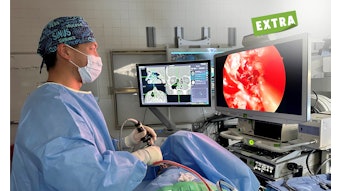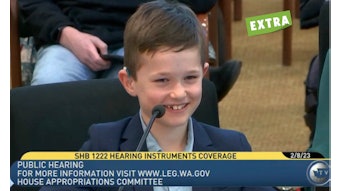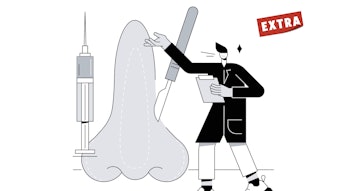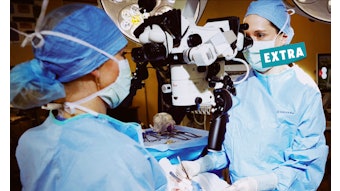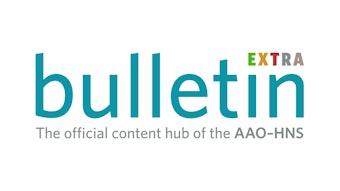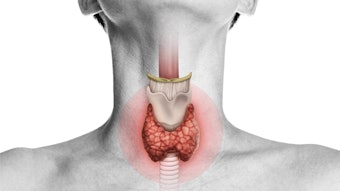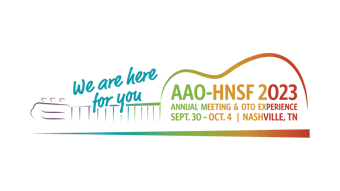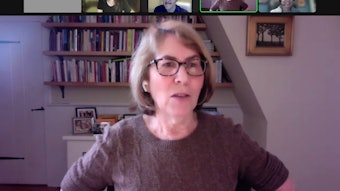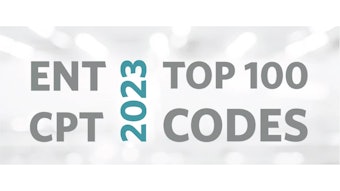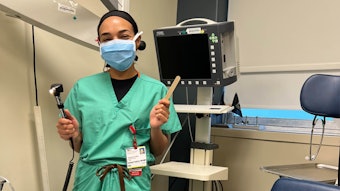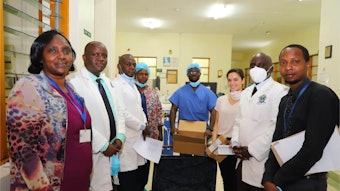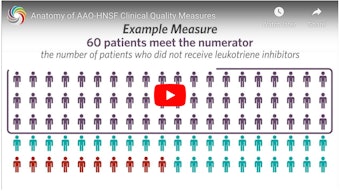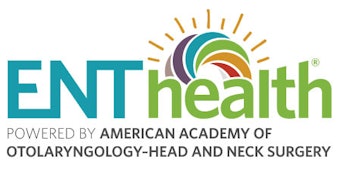Breastfeeding and Ankyloglossia
This Education Committee update highlights new breastfeeding guidelines and the importance of shared decision making regarding ankyloglossia.
Kara D. Meister, MD, Chair-elect, Pediatric Otolaryngology Education Committee

In June 2022, the American Academy of Pediatrics (AAP) updated its breastfeeding guidelines to recommend exclusive breastfeeding for the first six months and continued breastfeeding until age 2 years, prompting increased conversation surrounding the already controversial topic of ankyloglossia.1 The patient population seeking care for ankyloglossia is especially vulnerable—many families are highly motivated to improve feeding for their children and to meet the AAP guidelines. Women who experience difficulty breastfeeding are more likely to have symptoms of postpartum depression, while those successful in long-term breastfeeding gain protection against diabetes, hypertension, and certain cancers.2 Coupled with the formula shortage, an emphasis on the importance of transmitted antibodies in light of viral surges, and other societal pressures, more families may present for evaluation for ankyloglossia having done a significant amount of information seeking online.3
Keeping with generational trends, many parents seek advice about breastfeeding on crowdsourcing forums, blogs, and other social media sites and may be biased toward information even if is it not aligned with medical literature or best evidence. Social media posting about frenotomy and ankyloglossia has rapidly increased in recent years, often with conflicting information from both parents and providers.4 Realizing parental motivators—both the societal pressure to breastfeed and the flood of information and opinion generated online—is essential to having honest, informed conversations and offering shared decision making about evaluation and treatment of ankyloglossia.5
A 2020 study by Wei et al. of pediatric inpatients in the United States demonstrated that over the past two decades there has been a substantial increase in the rates of ankyloglossia diagnoses and the procedures performed: a fourfold increase in the number of newborns diagnosed with ankyloglossia and a fivefold increase in the number of frenotomies.6 Another study highlighted an uptick of frenotomies performed by non-otolaryngology clinicians, including pediatricians and dentists.7 There also is a difference in socioeconomic backgrounds of patients undergoing frenotomy, potentially driven by a disparity in accessing providers. Nontraditional dyads are also increasingly seeking evaluation, and the AAP recommends asking families which terms they prefer and considering that the term “chestfeeding” may be more reflective of their experience.
Otolaryngologists are especially poised to evaluate for other potential head and neck sources of breastfeeding problems such as nasal obstruction, airway obstruction, laryngopharyngeal reflux, and craniofacial anomalies (e.g., cleft palate), in keeping with the American Academy of Otolaryngology–Head and Neck Surgery Foundation’s (AAO-HNSF) Clinical Consensus Statement: Ankyloglossia in Children.8 We may also be called upon to evaluate for persistent ankyloglossia or for a revision procedure more often than other clinicians.9 In addition, we are able to refer our patients to feeding therapists who may provide more conservative treatments for these patients and avoid or augment performed procedures.10,11
Additional resources might be available in your area, such as lactation specialists or breastfeeding medicine specialists. There are otolaryngologists receiving special training and certification in lactation through the International Board of Lactation Consultant Examiners (IBLCE). The Academy has several resources designed for member education about ankyloglossia, including webcasts available in OTO Logic, the AAO-HNSF online otolaryngology education source. Lively discussions can also be found (or initiated!) on ENT Connect and its archives.
Although much controversy exists about tongue tie, the new AAP guidelines do clarify one important sentiment: Physicians, including subspecialists, play an important role in supporting children and parents in their breastfeeding goals, and we should seek to do this with equity, cultural sensitivity, and inclusivity.
